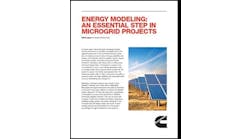Say you’re a city mayor with a $1 million to invest in job creation. Where will you get the most bang for your buck?
It turns out the energy efficiency is the best job creator when compared against other industries that vie for such dollars, according to a report by the Cadmus Group.
The independent consulting firm looked at the job creation impact of a 13-city energy efficiency retrofit effort on behalf of the Southeast Energy Efficiency Alliance (SEEA). It found that every $1 million spent from 2010 to 2013 resulted in the creation of just over 17 jobs.
Cadmus Group also looked at the number of jobs other industries would create if the money flowed their way. Energy efficiency bested all of them: construction; renewables energy; energy generation, distribution and transmission; and manufacturing.
The report, Benchmarking Job Creation in the Southeast, also found that energy efficiency produced the strongest ‘labor income.’ That’s the total payroll paid by an employer, including wages and salary, benefits and payroll taxes, as well as income earned by self-employed workers and single proprietors.
This reflects the fact that energy efficiency creates “good paying jobs,” according to SEEA.
Last, the report looked at how well the states faired in producing jobs through the program. Winners were Florida, Georgia, Alabama and Tennessee, which produced even stronger job growth than the region as a whole. SEEA attributed their performance to several factors, such as local program administration and spending; the availability of financing for retrofits; consumer education efforts; local market conditions; existing energy efficiency momentum; and the presence of strong marketing support, utility partnerships, and workforce training and development programs.
“Strong job growth is central to long-term economic prosperity,” said Mandy Mahoney, president of SEEA, which administered the 13-state federally funded program. “The healthy job numbers and economic output produced by the SEEA Consortium reinforce the powerful impact energy efficiency investments have in this region. These results help set the stage for new opportunities such as innovative financing programs. New loan products, such as property assessed clean energy (PACE) and on-bill financing that enable energy efficiency retrofits, are well positioned to launch additional job- and wealth-creating opportunities.”
The Department of Energy provided $20.2 million the southeastern program as part of the Better Buildings Neighborhood Program. It resulted in 10,000 building energy audits and 6,000 home and commercial building retrofits. The participating cities were: Arlington, Va.; Atlanta, Ga.; Birmingham, Ala.; Blacksburg/Roanoke, Va.; Carrboro, N.C; Chapel Hill, N.C; Charleston, S.C.; Charlotte, N.C. Charlottesville, Va.; Decatur, Ga.; Hampton Roads, Va.; Huntsville, Ala.; Jacksonville, Fla.; Nashville, Tenn.; New Orleans, La.; and Richmond, Va.
Would you like stories like this delivered directly to your mailbox? Subscribe to Energy Efficiency Markets free newsletter here.





